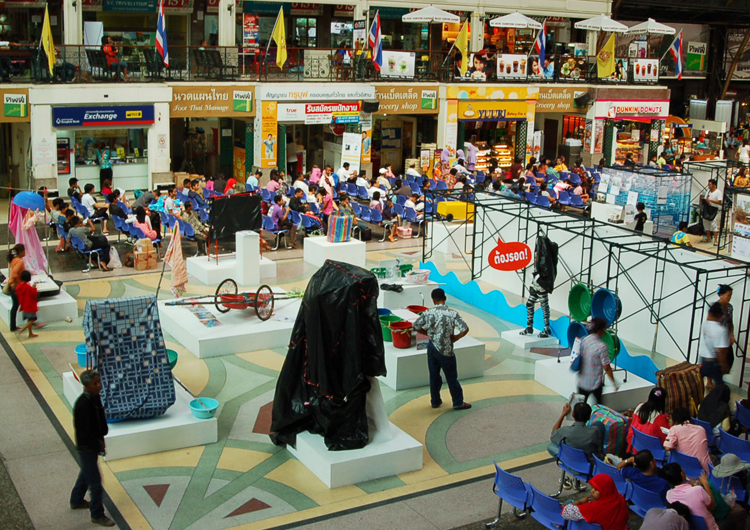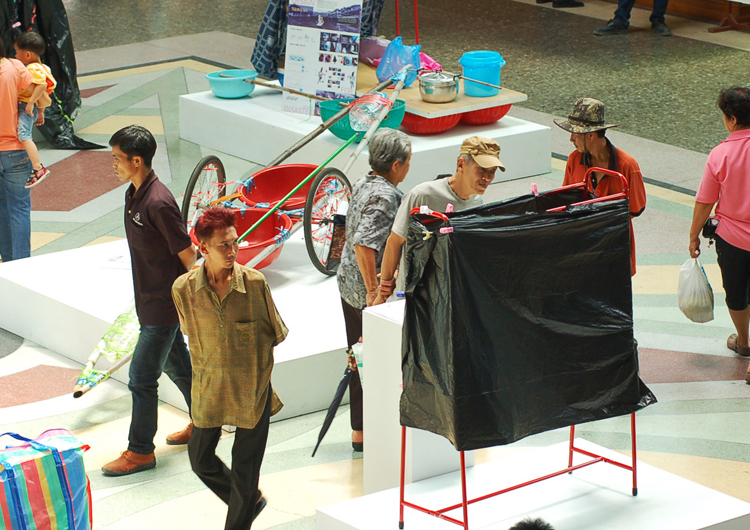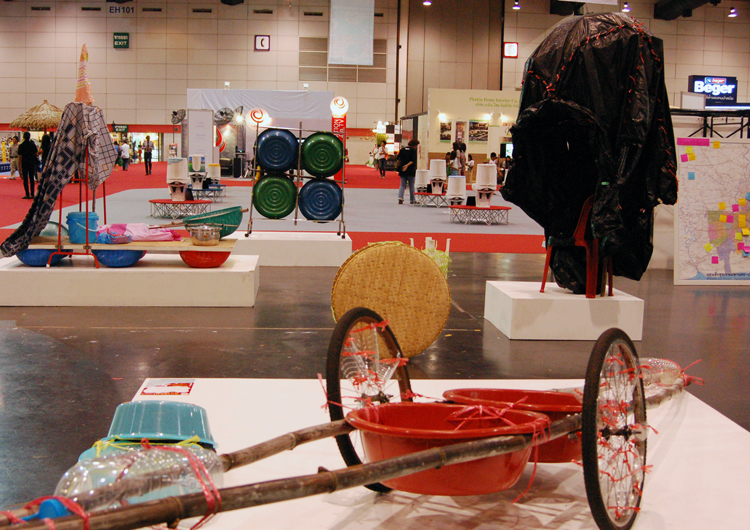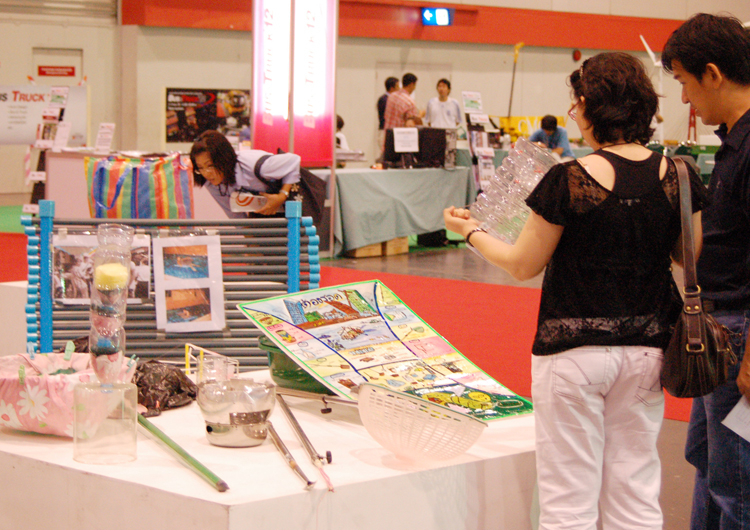
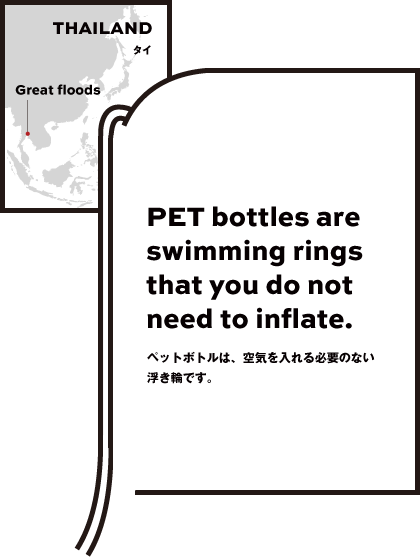 PET bottles are swimming rings that you do not need to inflate.
PET bottles are swimming rings that you do not need to inflate.
-

- 災害発生前
- デザイン
- Design for Disasters
- THAI THAI DAIJOBU!

Flotation device made of many plastic bottles and fishing nets
Try to make flotation devices using only everyday objects
Thailand, which was hit by devastating flooding in 2011, had suffered from serious flood damage in the previous year as well. The floods inflicted enormous damage on many areas in Thailand. One of the most affected areas was Ayutthaya, an important historical city, which is registered on the UNESCO World Heritage List. The major factors that worsened the flooding in Ayutthaya included the flat land area adjacent to many tributaries of major rivers; the floods spread from the northern area of Ayutthaya to the Gulf of Thailand; it continued to rain heavily in the rainy season; and many road works were being carried out, causing the flood control channels to be buried. A combination of these factors caused serious flooding in some areas in Ayutthaya, with the water level recording a rise of two meters.
Staff members of Design for Disasters (D4D), of which Vipavee Kunavichayanont serves as head, visited Ayutthaya during the season of serious floods to conduct on-site surveys. They aimed to examine the damage situation and understand the major factors that worsened the disasters. Moreover, they designed flotation devices available at the time of floods, made trial models for them and verified their usefulness on site. The devices were designed so that anyone could easily make them from readily available materials in emergency situations, such as used plastic bottles, fishing nets, ropes, plastic bags, rubber bands, bamboo, and plastic washbowls.
The staff members of D4D think it very important to provide support to residents so that they can overcome the difficulties for themselves in times of flooding, depending on the situation, without waiting for assistance from the government or other organizations. They plan to undertake further studies to put the prototypes of the flotation devices into practical use, aiming to save many lives in Thailand in the event of future flooding.
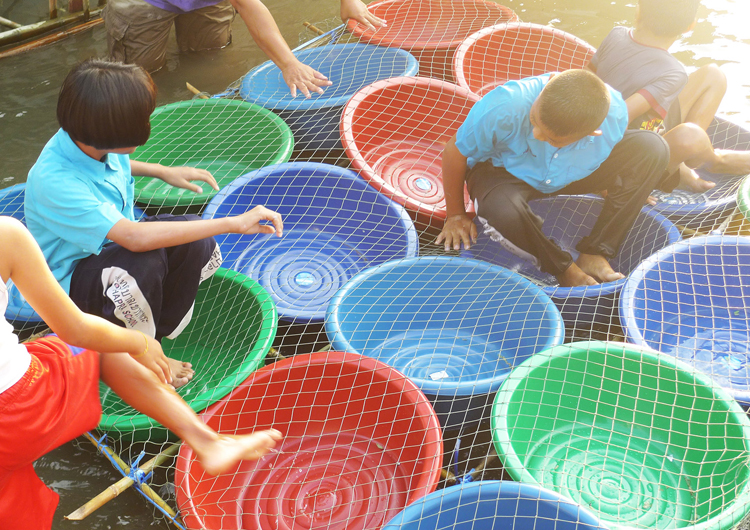
- Flotation device mainly made of washbouls
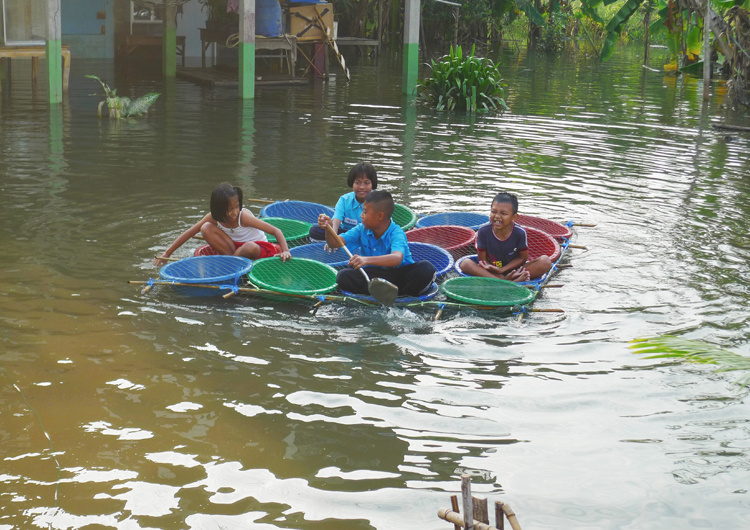
- Local children riding on a flotation device made of washbowls
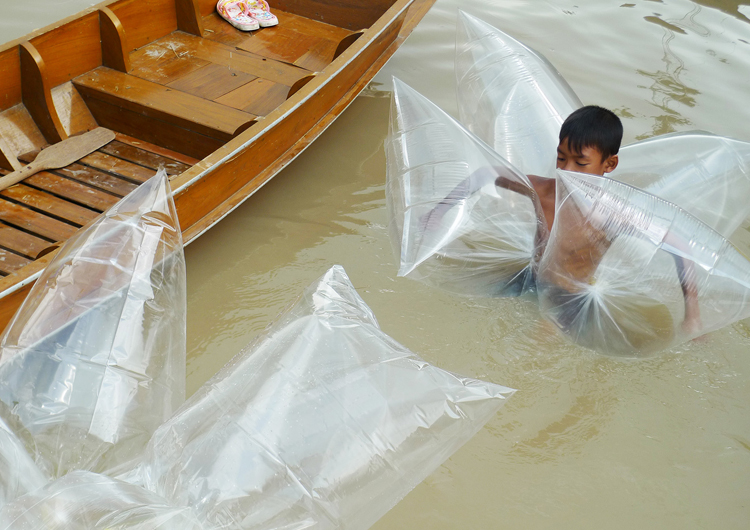
- Flotation device made of plastic bags and rubber bands. The idea for the device was obtained from ready-prepared food packs sold at stalls
A competition for ideas to use
household items for flood survival
Even in cities like Bangkok, human lives are exposed to the threat of flash floods. Governments can never absolutely ensure the security of cities and their residents. Since unexpected events may happen in the real world, there is no doubt that the most important disaster-prevention measures are for residents themselves to acquire knowledge and skills to survive such floods.
In light of this, D4D planned and hosted the “SURVIVE!” Design Competition in August 2011. The competition advertised for public ideas for rescue devices (survival devices) for floods, which should be made using any of 26 types of household item. The scenario for the floods for the competition was set up as follows: (1) Bangkok is caught in a rainstorm; (2) The Chao Phraya River overflows due to a massive flood spreading from the northern area; (3) the sea level in the Gulf of Thailand rises; and (4) Bangkok is hit by a flash flood due to land subsidence or other reason; the water level rises to two meters in three hours; and millions of residents in Bangkok are exposed to the danger of death and loss of assets. In addition, other conditions were also set out for the competition as below. Devices should be used for solving problems in at least one of five categories: shelters (houses), sanitary goods, transportation devices, clothing, and communications. Moreover, they should be able to be easily created within three hours. Applicants should be individuals or teams of adult (at least students in their third year of university), and they were allowed to make several applications. In the competition, every prize winner received a cash award of more than 60,000 baht. Judges comprised designers, lecturers, rescue personnel, medical volunteers, disaster survivors, the founders of D4D and other specialists. The main screening criterion was the originality of ideas and presentations.
Approximately 70 works were submitted to the competition, mainly from students, of which eight works finally won prizes.
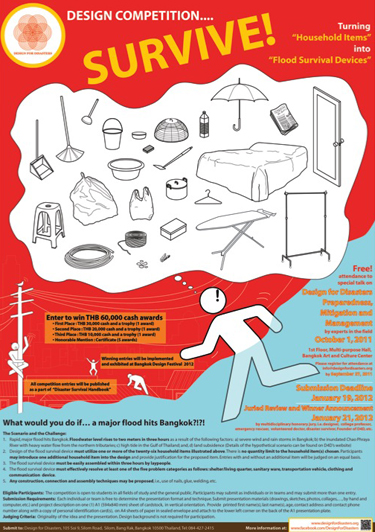
- Advertising poster for the “SURVIVE!” Design Competition

- Group photo of prize winners of the “SURVIVE!” Design Competition

- Prize-winning works at the “SURVIVE!” Design Competition
Spreading wisdom and ingenuity to
prepare for yearly floods
In March 2012, D4D held a five-day exhibition at Hua Lamphong Station, from which long-distance trains start their journeys. It was a large-scale exhibition with display booths for ten projects set up at the venue. The displays included works that won prizes at the “SURVIVE!” Design Competition, photographs of the effects of flooding, and rescue devices submitted by students to the “SURVIVE!” Sketch Design Project (which was held at four universities as an exercise lesson, where devices should be designed within 15 minutes under the same disaster conditions as those defined for the “SURVIVE!” competition). In addition, the results of interviews with 100 survivors of floods, samples of ideas for flood countermeasures by product designers, and suggestions for flood-resistant housing by architects were also displayed.
The purpose of the exhibition was to stimulate the originality and ingenuity of people in Thailand to live in a moderate and independent manner, in order to pass down wisdom to the next generation, nurture inspiration, be aware of the possibility of sudden floods, and realize a sustainable society. Through the displays of works that won prizes at the competition, D4D aimed to make many visitors realize that they too could easily create survival devices from readily available items by exerting their originality and ingenuity in emergency situations. Subsequently, it held a similar exhibition at a large-scale exhibition hall.
The major purposes of these activities of D4D are to build a social foundation where people can voluntarily consider and take action against natural disasters involving flooding, which have caused crises in Thailand every year, and to provide people with the chance to create such a social foundation. Eventually, D4D aims to educate everyone in Thailand, while offering various examples of ideas for flood preparedness as educational tools so that people can be fully aware of disaster preparedness.
